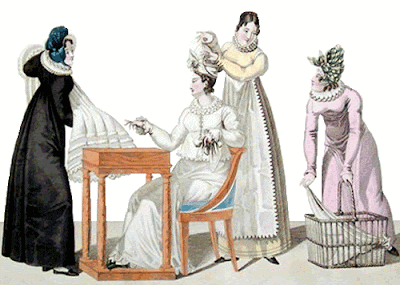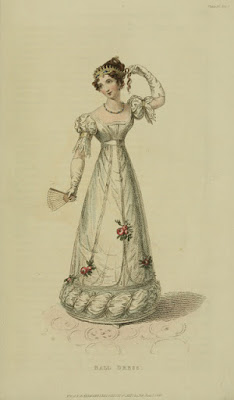Shopping in the early 19th Century.
by Maggi Andersen
Burlington Arcade
New gowns were ordered by consulting the many fashion sketches. Sometimes a dress maker would design a new gown for a favored customer. Fabrics were carefully selected and held up toward the light to be inspected for flaws. This dress shop supplies trimmings: lace, braiding, ribbons, buttons and beads to enhance the dress as well as dress making. Partly finished dresses were tried on for last minute alterations.
Modiste with assistants The early 19th century saw the beginning of the modern fashion designer. Up to this point a woman went to the dressmaker for her gowns, the milliner for her hats, gloves and other accessories were purchased from other shops. The fashion designer, on the other hand, offered the whole package. Our print shows just such a shop, with the proprietor in black with a sample garment while one assistant adjusts the hat and another brings in a second.
 | |
| Cheapside 1813, East India House | Merchants serving the rich had began to gravitate to the Mayfair area but Covent Garden, Cheapside and Fleet Street remained havens for shopping. |
Appearing in the July 1817 Ackermann’s Repository, this ad for low priced silks on Hanway street from the latest French patterns.
1823 Fashion
 |
 Hats
Hats
Evening Dresses
Ball Gowns
With thanks to http://hibiscus-sinensis.com
Google Books
Ackermann's Repository













No comments:
Post a Comment